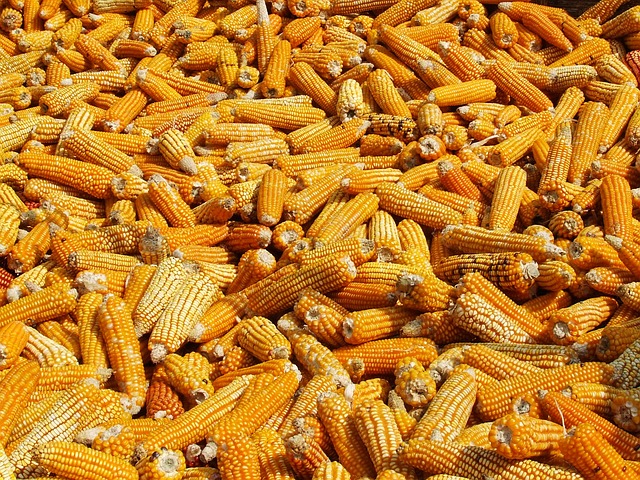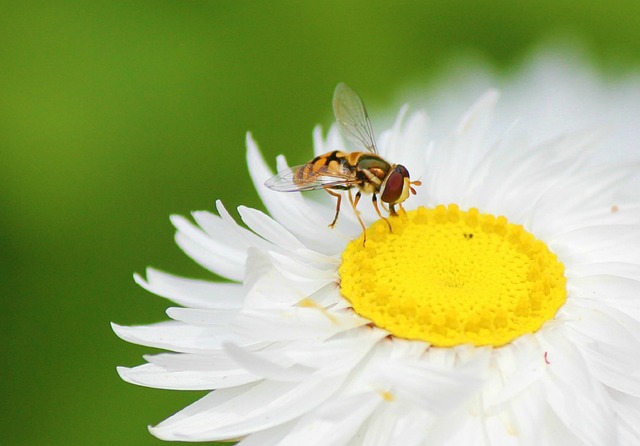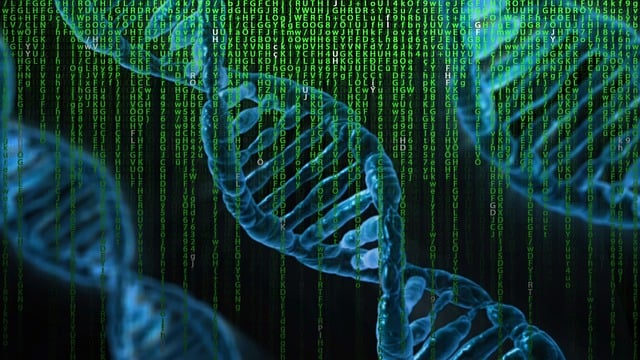General Characteristics
1. Kingdom Monera includes which type of organisms?
(a) Multicellular eukaryotes
(b) Unicellular prokaryotes
(c) Multicellular prokaryotes
(d) Unicellular eukaryotes
Answer: (b) Unicellular prokaryotes
Explanation: Monerans are single-celled organisms without a nucleus or membrane-bound organelles.
2. Which of the following is absent in Monerans?
(a) DNA
(b) Cell wall
(c) Membrane-bound organelles
(d) Ribosomes
Answer: (c) Membrane-bound organelles
Explanation: Monerans lack a true nucleus and organelles like mitochondria and Golgi bodies.
3. The genetic material in prokaryotes is:
(a) Linear DNA with histones
(b) Circular DNA without histones
(c) Linear DNA with nucleosomes
(d) Double-stranded RNA
Answer: (b) Circular DNA without histones
Explanation: Prokaryotes have circular DNA, and histones are absent.
Most Important Mcqs on Kingdom Monera
Classification of Monera
4. Bacteria can be classified based on shape into all except:
(a) Bacillus
(b) Coccus
(c) Spirillum
(d) Mycelium
Answer: (d) Mycelium
Explanation: Mycelium is a feature of fungi, not bacteria.
5. Rod-shaped bacteria are called:
(a) Cocci
(b) Bacilli
(c) Spirilla
(d) Vibrios
Answer: (b) Bacilli
Explanation: Bacilli are rod-shaped, while cocci are spherical.
6. Bacteria that derive energy from inorganic substances are called:
(a) Autotrophic
(b) Heterotrophic
(c) Chemoautotrophic
(d) Photoautotrophic
Answer: (c) Chemoautotrophic
Explanation: Chemoautotrophs obtain energy by oxidising inorganic compounds.
Bacterial Reproduction
Binary fission in bacteria results in:
(a) Two genetically identical daughter cells
(b) Four daughter cells
(c) A spore-like structure
(d) A single new bacterium
Answer: (a) Two genetically identical daughter cells
Explanation: Binary fission is an asexual method of reproduction.
8. Conjugation in bacteria involves:
(a) Transfer of genetic material
(b) Fusion of gametes
(c) Binary fission
(d) Endospore formation
Answer: (a) Transfer of genetic material
Explanation: Conjugation is a type of genetic recombination where DNA is transferred through a pilus
Bacterial Nutrition and Metabolism
9.Bacteria that can survive in oxygen-rich and oxygen-poor environments are called:
(a) Obligate aerobes
(b) Obligate anaerobes
(c) Facultative anaerobes
(d) Autotrophic bacteria
Answer: (c) Facultative anaerobes
Explanation: Facultative anaerobes can switch between aerobic and anaerobic respiration.
10. Cyanobacteria are:
(a) Heterotrophic
(b) Photosynthetic autotrophs
(c) Parasitic
(d) Saprophytic
Answer: (b) Photosynthetic autotrophs
Explanation: Cyanobacteria contain chlorophyll and perform photosynthesis.
Importance of Bacteria
11. Which of the following bacteria is used in the production of curd?
(a) Lactobacillus
(b) Rhizobium
(c) Escherichia coli
(d) Streptococcus
Answer: (a) Lactobacillus
Explanation: Lactobacillus helps in curd formation by fermenting lactose.
12. Bacteria involved in nitrogen fixation include:
(a) Rhizobium
(b) Clostridium
(c) Azotobacter
(d) All of the above
Answer: (d) All of the above
Explanation: These bacteria convert atmospheric nitrogen into usable forms.
Pathogenic Bacteria
13. Which of the following diseases is caused by bacteria?
(a) Malaria
(b) Tuberculosis
(c) AIDS
(d) Dengue
Answer: (b) Tuberculosis
Explanation: TB is caused by Mycobacterium tuberculosis.
14. The bacterium Vibrio cholerae causes:
(a) Typhoid
(b) Cholera
(c) Tuberculosis
(d) Tetanus
Answer: (b) Cholera
Explanation: Cholera is an infection of the intestines caused by Vibrio cholerae.
Unique Features
Bacterial cell walls are made of:
(a) Cellulose
(b) Peptidoglycan
(c) Chitin
(d) Lignin
Answer: (b) Peptidoglycan
Explanation: Peptidoglycan provides strength to bacterial cell walls.
Which of the following is a characteristic of Gram-positive bacteria?
(a) Thick peptidoglycan layer
(b) Presence of an outer membrane
(c) Lipopolysaccharide-rich cell wall
(d) Staining red in Gram staining
Answer: (a) Thick peptidoglycan layer
Explanation: Gram-positive bacteria retain the crystal violet stain due to their thick peptidoglycan layer.
Bacterial Structure and Function
The small, circular DNA found in bacteria, apart from the chromosomal DNA, is called:
(a) Nucleoid
(b) Plasmid
(c) Ribosome
(d) Capsid
Answer: (b) Plasmid
Explanation: Plasmids are extra-chromosomal DNA that often carry antibiotic resistance genes.
Which structure helps bacteria in mobility?
(a) Pili
(b) Capsule
(c) Flagella
(d) Ribosome
Answer: (c) Flagella
Explanation: Flagella are tail-like structures that help in bacterial movement.
The capsule in bacteria provides:
(a) Photosynthesis
(b) Protection against desiccation and host immunity
(c) Locomotion
(d) Genetic material
Answer: (b) Protection against desiccation and host immunity
Explanation: Capsules help bacteria evade immune responses and retain moisture.
Bacterial ribosomes are of which type?
(a) 70S
(b) 80S
(c) 100S
(d) 90S
Answer: (a) 70S
Explanation: Prokaryotic ribosomes are 70S, while eukaryotic ribosomes are 80S.
Gram Staining and Cell Wall Differences
In Gram staining, Gram-negative bacteria appear:
(a) Purple
(b) Red/Pink
(c) Green
(d) Blue
Answer: (b) Red/Pink
Explanation: Gram-negative bacteria have a thin peptidoglycan layer and do not retain the crystal violet stain.
Gram-positive bacteria differ from Gram-negative bacteria in that they:
(a) Have a thick peptidoglycan layer
(b) Lack a cell wall
(c) Have an outer lipopolysaccharide layer
(d) Lack a plasma membrane
Answer: (a) Have a thick peptidoglycan layer
Explanation: Gram-positive bacteria have a thick peptidoglycan layer, making them retain the Gram stain.
Bacterial Reproduction and Genetic Exchange
Transformation in bacteria involves:
(a) Transfer of DNA via bacteriophage
(b) Uptake of free DNA from the environment
(c) Cell division
(d) Gene mutation
Answer: (b) Uptake of free DNA from the environment
Explanation: Transformation is a method of genetic recombination where bacteria take up foreign DNA.
Bacteriophages help bacteria in genetic transfer by:
(a) Transformation
(b) Transduction
(c) Conjugation
(d) Binary fission
Answer: (b) Transduction
Explanation: Transduction involves the transfer of genetic material through bacteriophages.
Most Important Mcqs on Kingdom Monera
Role of Bacteria in the Environment
Bacteria that decompose dead organic matter are called:
(a) Parasitic
(b) Saprophytic
(c) Mutualistic
(d) Autotrophic
Answer: (b) Saprophytic
Explanation: Saprophytic bacteria obtain energy by decomposing organic material.
Rhizobium is associated with which plant for nitrogen fixation?
(a) Rice
(b) Wheat
(c) Legumes
(d) Maize
Answer: (c) Legumes
Explanation: Rhizobium forms symbiotic relationships with legumes to fix atmospheric nitrogen.
Which bacteria convert ammonia into nitrites?
(a) Nitrosomonas
(b) Rhizobium
(c) Pseudomonas
(d) Azotobacter
Answer: (a) Nitrosomonas
Explanation: Nitrosomonas is involved in nitrification, converting ammonia to nitrites.
Bacterial Diseases
Which of the following is NOT caused by bacteria?
(a) Cholera
(b) Tuberculosis
(c) Influenza
(d) Tetanus
Answer: (c) Influenza
Explanation: Influenza is caused by a virus, not a bacterium.
The causative agent of typhoid fever is:
(a) Escherichia coli
(b) Salmonella typhi
(c) Vibrio cholerae
(d) Mycobacterium tuberculosis
Answer: (b) Salmonella typhi
Explanation: Salmonella typhi is responsible for typhoid fever.
Which bacteria cause food poisoning?
(a) Streptococcus pneumoniae
(b) Clostridium botulinum
(c) Mycobacterium leprae
(d) Treponema pallidum
Answer: (b) Clostridium botulinum
Explanation: Clostridium botulinum produces toxins that cause food poisoning.
Archaebacteria vs. Eubacteria
Archaebacteria differ from eubacteria in their:
(a) Presence of a nucleus
(b) Cell wall composition
(c) Mode of reproduction
(d) Shape
Answer: (b) Cell wall composition
Explanation: Archaebacteria have pseudopeptidoglycan or no peptidoglycan, unlike eubacteria.
Thermoacidophiles belong to:
(a) Eubacteria
(b) Archaebacteria
(c) Cyanobacteria
(d) Mycoplasma
Answer: (b) Archaebacteria
Explanation: Thermoacidophiles thrive in acidic and high-temperature environments.
Methanogens are commonly found in:
(a) Human skin
(b) Hot springs
(c) Intestines of ruminants
(d) Freshwater lakes
Answer: (c) Intestines of ruminants
Explanation: Methanogens produce methane in the gut of ruminants.
Antibiotics and Resistance
The first antibiotic discovered was:
(a) Streptomycin
(b) Penicillin
(c) Tetracycline
(d) Erythromycin
Answer: (b) Penicillin
Explanation: Alexander Fleming discovered penicillin in 1928.
Bacterial resistance to antibiotics occurs due to:
(a) Gene mutation
(b) Overuse of antibiotics
(c) Plasmid transfer
(d) All of the above
Answer: (d) All of the above
Explanation: Bacteria develop resistance through mutations and genetic exchange.
Which structure in bacteria is responsible for antibiotic resistance transfer?
(a) Ribosome
(b) Plasmid
(c) Flagella
(d) Capsule
Answer: (b) Plasmid
Explanation: Plasmids carry genes for antibiotic resistance.
Bacterial Structure and Function
Which bacterial component helps in attachment to surfaces and host tissues?
(a) Flagella
(b) Pili
(c) Capsule
(d) Ribosome
Answer: (b) Pili
Explanation: Pili are hair-like structures that help bacteria adhere to surfaces and in conjugation.
Bacteria lacking a cell wall belong to which group?
(a) Archaebacteria
(b) Mycoplasma
(c) Cyanobacteria
(d) Actinomycetes
Answer: (b) Mycoplasma
Explanation: Mycoplasma are the smallest free-living bacteria and lack a cell wall.
The process by which bacteria form a resistant structure to survive harsh conditions is called:
(a) Binary fission
(b) Conjugation
(c) Endospore formation
(d) Transformation
Answer: (c) Endospore formation
Explanation: Some bacteria form endospores to withstand extreme conditions.
Bacterial Growth and Reproduction
Which phase of bacterial growth is characterised by rapid cell division?
(a) Lag phase
(b) Log (exponential) phase
(c) Stationary phase
(d) Decline phase
Answer: (b) Log (exponential) phase
Explanation: During the log phase, bacteria multiply at the maximum rate.
What is the role of quorum sensing in bacteria?
(a) DNA replication
(b) Cell mobility
(c) Communication and coordinated behavior
(d) Antibiotic resistance
Answer: (c) Communication and coordinated behavior
Explanation: Quorum sensing allows bacteria to regulate gene expression in response to population density.
Which of the following statements about bacterial conjugation is incorrect?
(a) It involves the transfer of genetic material.
(b) It requires direct cell-to-cell contact.
(c) It is a method of asexual reproduction.
(d) It increases genetic variability.
Answer: (c) It is a method of asexual reproduction.
Explanation: Conjugation is a form of genetic recombination, not asexual reproduction.
Bacteria and Biotechnology
Which bacterium is used in the production of insulin through genetic engineering?
(a) Bacillus subtilis
(b) Escherichia coli
(c) Rhizobium
(d) Clostridium
Answer: (b) Escherichia coli
Explanation: Escherichia coli is genetically modified to produce human insulin.
The bacterium Streptomyces is important for producing:
(a) Antibiotics
(b) Yogurt
(c) Alcohol
(d) Bioplastics
Answer: (a) Antibiotics
Explanation: Streptomyces species produce many antibiotics, including streptomycin.
Which of the following bacteria is used in bioremediation?
(a) Pseudomonas putida
(b) Clostridium botulinum
(c) Treponema pallidum
(d) Vibrio cholerae
Answer: (a) Pseudomonas putida
Explanation: Pseudomonas putida is used in cleaning up oil spills and other pollutants.
Bacterial Adaptations and Ecology
Halophilic bacteria thrive in:
(a) Acidic environments
(b) High-temperature environments
(c) Saline environments
(d) Oxygen-deficient environments
Answer: (c) Saline environments
Explanation: Halophiles are salt-loving bacteria, often found in salt lakes and seas.
Which bacteria help in sewage treatment by decomposing organic waste?
(a) Methanobacterium
(b) Rhizobium
(c) Clostridium
(d) Streptococcus
Answer: (a) Methanobacterium
Explanation: Methanobacterium is involved in anaerobic digestion, producing methane in sewage treatment.
Which bacteria are known for their ability to survive extreme conditions?
(a) Cyanobacteria
(b) Mycoplasma
(c) Archaebacteria
(d) Eubacteria
Answer: (c) Archaebacteria
Explanation: Archaebacteria can live in extreme environments like hot springs and salt flats.
Harmful Effects of Bacteria
Botulism is caused by:
(a) Escherichia coli
(b) Clostridium botulinum
(c) Staphylococcus aureus
(d) Bacillus anthracis
Answer: (b) Clostridium botulinum
Explanation: C. botulinum produces a neurotoxin causing botulism.
50 .Which of the following diseases is caused by Mycobacterium leprae?
(a) Tuberculosis
(b) Leprosy
(c) Tetanus
(d) Plague
Answer: (b) Leprosy
Explanation: Mycobacterium leprae is the causative agent of leprosy, affecting skin and nerves.



